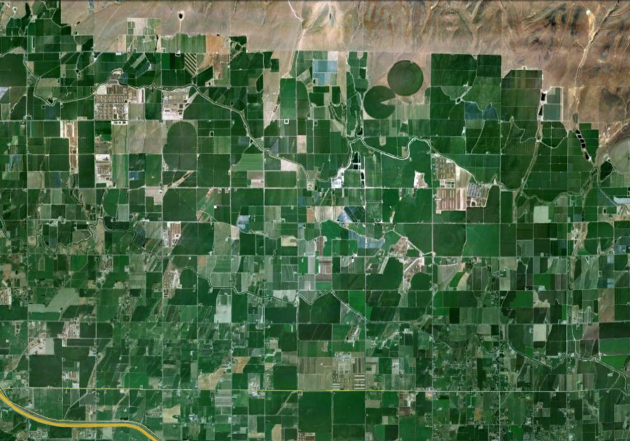The Yakima Valley is a large agricultural area where there are multiple potential sources of nitrate in groundwater. Potential sources are intermingled, i.e., homes with septic systems are on the same properties as the dairies or adjacent to farms and/or dairies. In 2012, Region 10 of the US Environmental Protection Agency undertook a study to source track and identify nitrogen sources in the Yakima River Basin as part of an enforcement effort focusing on dairies. EPA position was that the targeted dairies did not properly apply nutrients to land application fields at agronomic rates, resulting in groundwater contamination. The study area is underlain by 3 aquifers, a shallow perched aquifer likely related to irrigation return flows, an alluvial aquifer and an underlying basalt aquifer. The three aquifers are hydrologically connected either through natural pathways or through wells completed into more than one aquifer. Because none of the potential sources are isolated, source tracking requires an in-depth knowledge of aquifer properties such as aquifer thickness, groundwater flow direction, hydraulic conductivity, and vertical leakance in addition to understanding localized effects of ditches, drains and production wells on groundwater flow. EPA focused on groundwater chemistry, assuming that indicators such as pesticides and other trace organic compounds would tie the groundwater nitrate to a specific source. EPA’s study failed to yield clear indicators pointing to specific sources and did not collect hydrologic data for its 2012 report to gain a detailed understanding of aquifer properties. This presentation will address how to accurately characterize the hydrogeology below dairy production areas and land application fields, and how to proactively manage nutrients to protect dairies from unsubstantiated enforcement actions
Purpose
Glorieta Geoscience, Inc. (GGI) was contracted by the Washington State Diary federation and Dairy Producers of New Mexico to conduct a technical evaluation of three reports prepared by U.S. Environmental Protection Agency Region 10 (EPA) to identify sources of nitrate in the Yakima Valley.
What did we do?
 We conducted a scientific peer review of EPA’s project design, methodologies, compliance with EPA’s own Quality Assurance Project Plan/Quality Control procedures, evaluated the overall study design/site selection as described in the three (3) reports, addressed specific data collection concerns and analyzed the results and conclusions drawn from the data as described in the main body of the Report to determine if EPA’s methodology and conclusions were supported by data. We analyzed the overall study design, hydrogeological characterizations, well completions, sample collection (green water, soils and ground water), geochemistry, stable isotopic and organic compound analyses and EPA’s conclusions from these efforts.
We conducted a scientific peer review of EPA’s project design, methodologies, compliance with EPA’s own Quality Assurance Project Plan/Quality Control procedures, evaluated the overall study design/site selection as described in the three (3) reports, addressed specific data collection concerns and analyzed the results and conclusions drawn from the data as described in the main body of the Report to determine if EPA’s methodology and conclusions were supported by data. We analyzed the overall study design, hydrogeological characterizations, well completions, sample collection (green water, soils and ground water), geochemistry, stable isotopic and organic compound analyses and EPA’s conclusions from these efforts.
What have we learned?
EPA did not achieve their objectives because the aquifer properties such as groundwater flow direction were not evaluated, not all potential sources at each study site were evaluated and mapped and trace organic compound analyses did not yield reliable data or were inconclusive. As a consequence, EPA did not produce a study with reproducible results that supports its conclusions that specific sources of nitrate in domestic wells the Yakima Valley can be identified.
We learned that EPA does not follow their own QAPP and Quality Assurance protocols and that there was significant lack of supporting technical information for EPA to arrive at the conclusions presented in the report.
Author
Jay Lazarus, Glorieta Geosciences lazarus@glorietageo.com
The authors are solely responsible for the content of these proceedings. The technical information does not necessarily reflect the official position of the sponsoring agencies or institutions represented by planning committee members, and inclusion and distribution herein does not constitute an endorsement of views expressed by the same. Printed materials included herein are not refereed publications. Citations should appear as follows. EXAMPLE: Authors. 2015. Title of presentation. Waste to Worth: Spreading Science and Solutions. Seattle, WA. March 31-April 3, 2015. URL of this page. Accessed on: today’s date.

